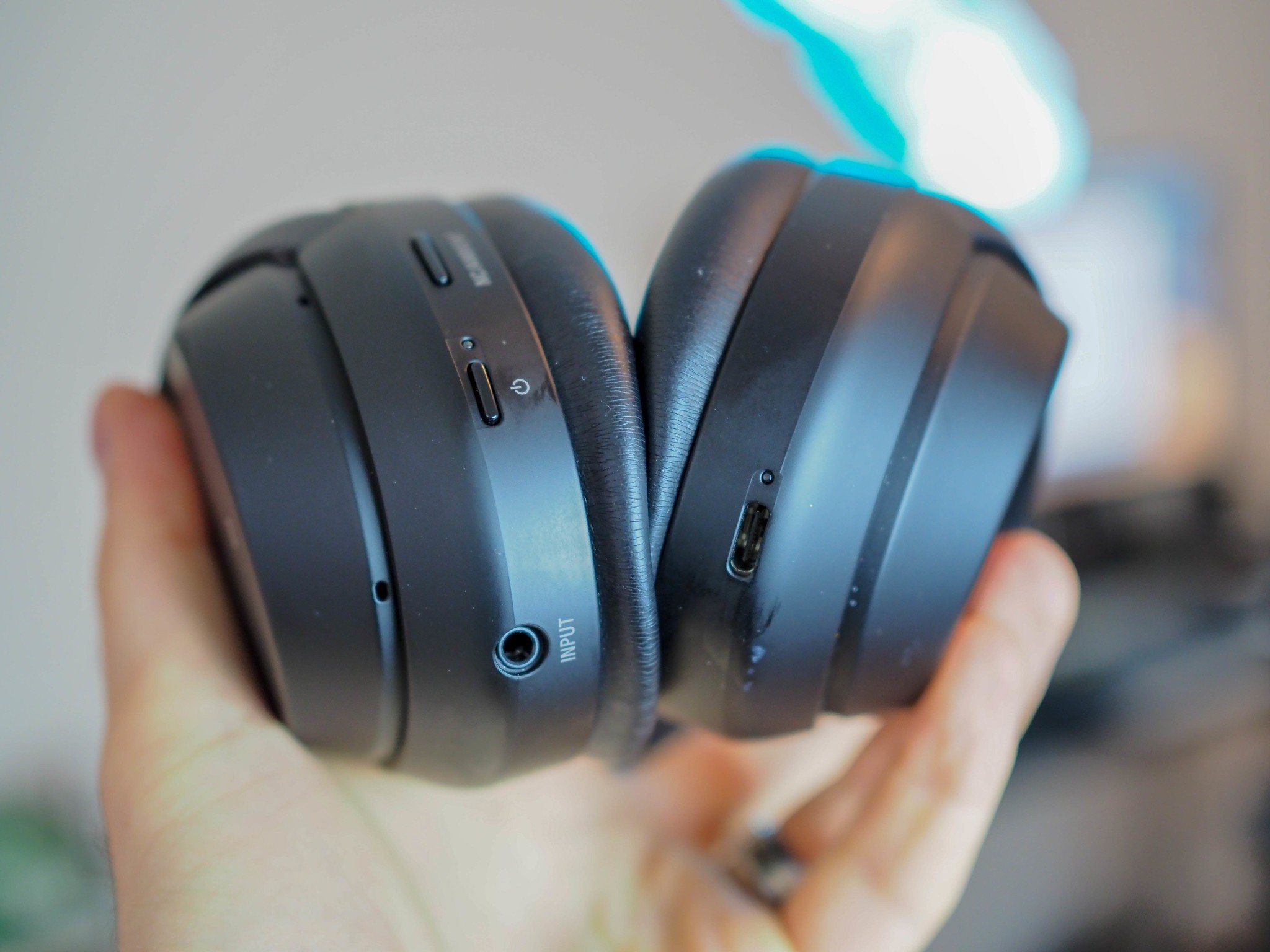
Wireless Bluetooth headphones have become increasingly popular over the last several years. The best wireless headphones have support for great, high-fidelity sound. That's why the Sony WH-1000XM3 are our best overall pick. They have excellent sound quality, battery life, and are comfortable for long-term use — and their noise cancelation is second-to-none.
Best overall: Sony WH-1000XM3

By far, the most significant feature of the XM3s is their class-leading active noise canceling (ANC). Not only does it make traveling much easier by completely drowning out things such as planes and trains; they're excellent at blocking out higher-pitched sounds as well. The ANC you get out of the XM3 are legitimate, and it sometimes feels like you're in an empty room.
In terms of sound quality, bass heads will rejoice here. The sound quality of the XM3s lean heavily on the bass giving it a ton of thump and rumble. So much so that it can often sound overbearing and muddy. The mid-range is relatively neutral, and the treble region is recessed heavily giving the XM3 an overall warm and dark sound signature. Those who don't like a ton of bass should avoid these.
Bluetooth codec support here is excellent. The XM3s support everything from SBC, AAC, aptX, aptX-HD, and LDAC. The only codec that's missing is aptX-LL, which would get you ridiculously low latency over a Bluetooth connection. However, it's understandable that it isn't there because the XM3s have to do a ton of post-processing for the ANC.
Battery life is excellent with up to 30 hours of wireless listening time on a single charge. They even have fast-charging capability over USB-C that will get you five hours of listening in a 10-minute charge, which is impressive. One downside to the XM3 when it comes to charging is that you can't use them while wired or wireless. The XM3s will disable all functions until you unplug the USB-C cable.
Pros:
- Battery life
- Active Noise Cancelation (ANC)
- Bluetooth codec support
- Sound quality
Cons:
- No charging and listening at the same time
- No aptX-LL
Best overall
Sony WH-1000XM3
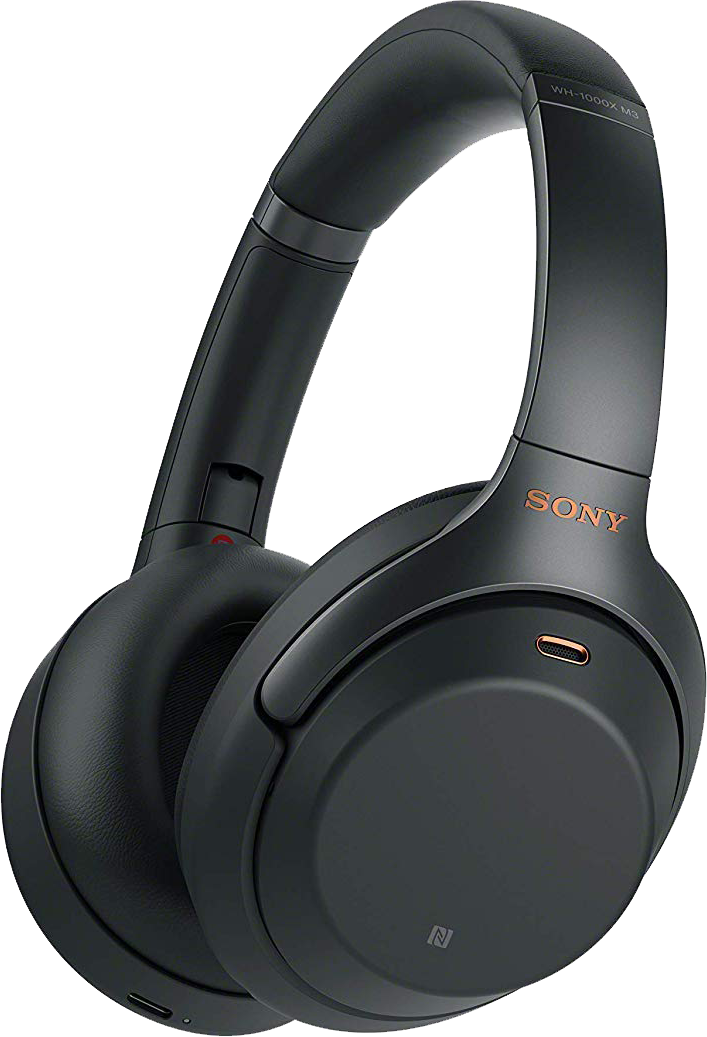
The ANC King, but excellent overall
It's hard to name over-ear wireless headphones nowadays without mentioning ANC. The XM3s do everything well: ANC, battery life, sound quality, and reliability.
Value Pick: Plantronics Backbeat Pro 2

Most, if not all, modern over-ear headphones nowadays come with active noise cancelation (ANC) in the box; especially if you're looking for wireless over-ear headphones. The Plantronics Backbeat Pro 2 is our pick for the best overall pair of headphones.
First things first: the sound quality on the Backbeat Pro 2 are exceptional, and bass heads will be happy. They feature an overemphasized bass that gives the Backbeat Pro 2 an overall bass-heavy sound signature. Both the mid-range and the treble are neutral with almost zero overemphasis on either region.
In terms of Bluetooth audio codecs, the Backbeat Pro 2 perform excellently. While they don't support the AAC codec, they do have support for SBC, aptX, and aptX-LL. With aptX-LL, you'll get ultra-low latency for a Bluetooth headphone with latency somewhere between 30-40ms. In comparison, most other Bluetooth codecs have latency around 100-150ms.
Comfort-wise, the Plantronics Backbeat Pro 2 are super comfortable and shouldn't give you much trouble when it comes to comfort. This is important as they feature up to 24 hours of battery on a single charge. And when the battery is dead, you can charge the Backbeat Pro 2 over its Micro-USB port.
Pros:
- 24-hour battery life
- Sound quality
- aptX and aptX LL Bluetooth audio codecs
Cons:
Value pick
Plantronics Backbeat Pro 2
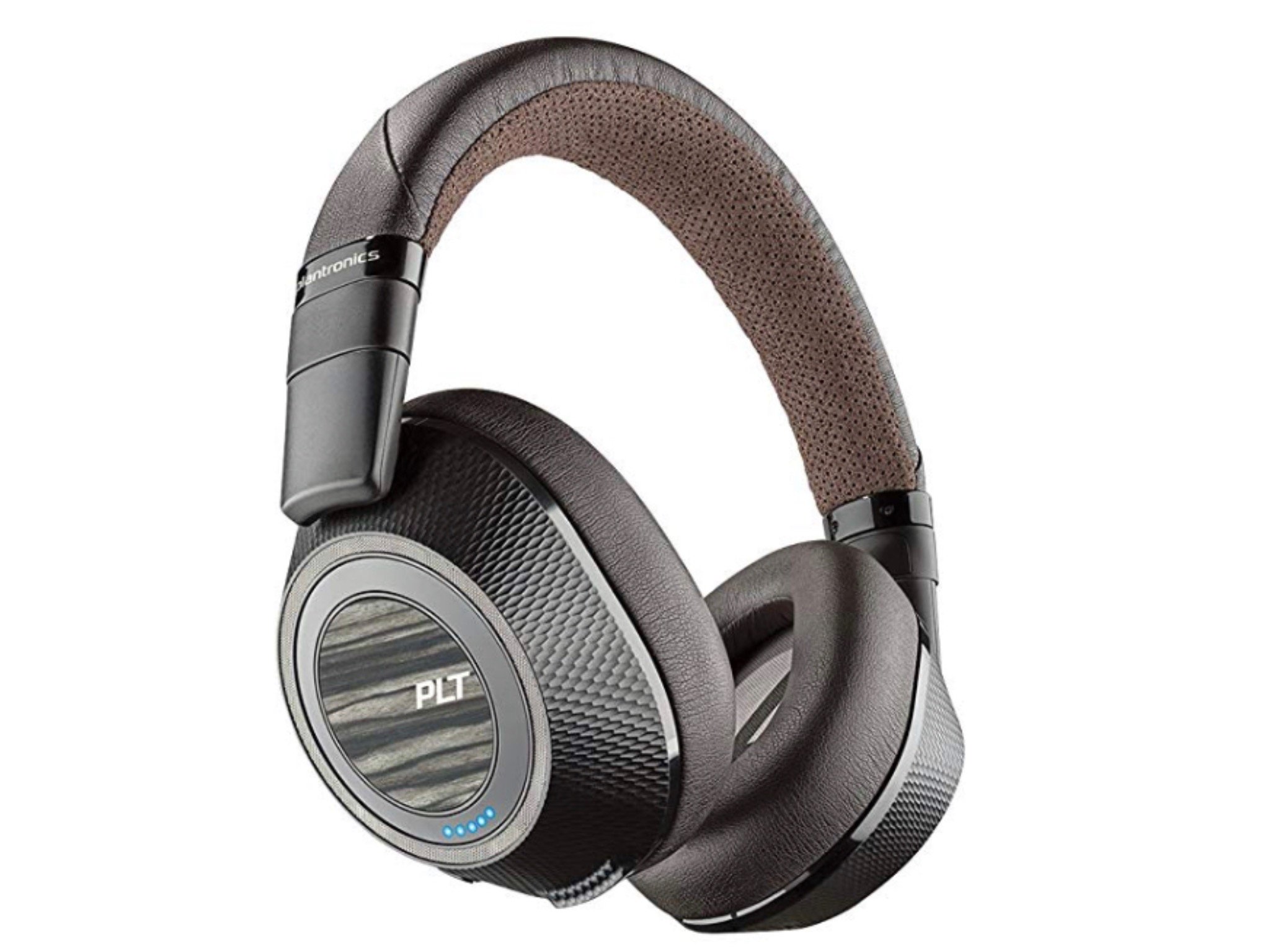
Great sound, comfort, and battery life
The Backbeat Pro 2 from Plantronics has a lot going for it. Great sound, battery life, comfort, and support for aptX-LL.
Best Budget Headphones: Tribit XFree Tune

If you're looking for ridiculously long battery life, the Tribit XFree Tune are the right headphones for you. They last up to 40 hours on a single charge which will get most people through the week without needing to recharge.
In terms of sound quality, the XFree Tune perform decently well. The bass is elevated but isn't too overwhelming. The mid-range is neutral and smooth, and the treble has an emphasis, making some tracks sound overly bright. On the bright side, they do support the AAC audio codec which means you'll get higher-fidelity audio and lower latency versus only having the SBC codec.
For comfort, the XFree Tune are excellent. In our testing, we're able to wear these for hours on end without any issues. Ears stayed relatively cool, the headband wasn't pushing up against the head, and it didn't feel like the ear cups were squeezing the head at all.
Pros:
- V-shaped, fun sound
- AAC audio support
- Comfortable
- Battery life
Cons:
Best Budget Headphones
Tribit XFree Tune

They last basically forever
You get excellent sound and great comfort for ridiculously long listening sessions at a low price.
Best Budget Earbuds: Anker SoundBuds Slim
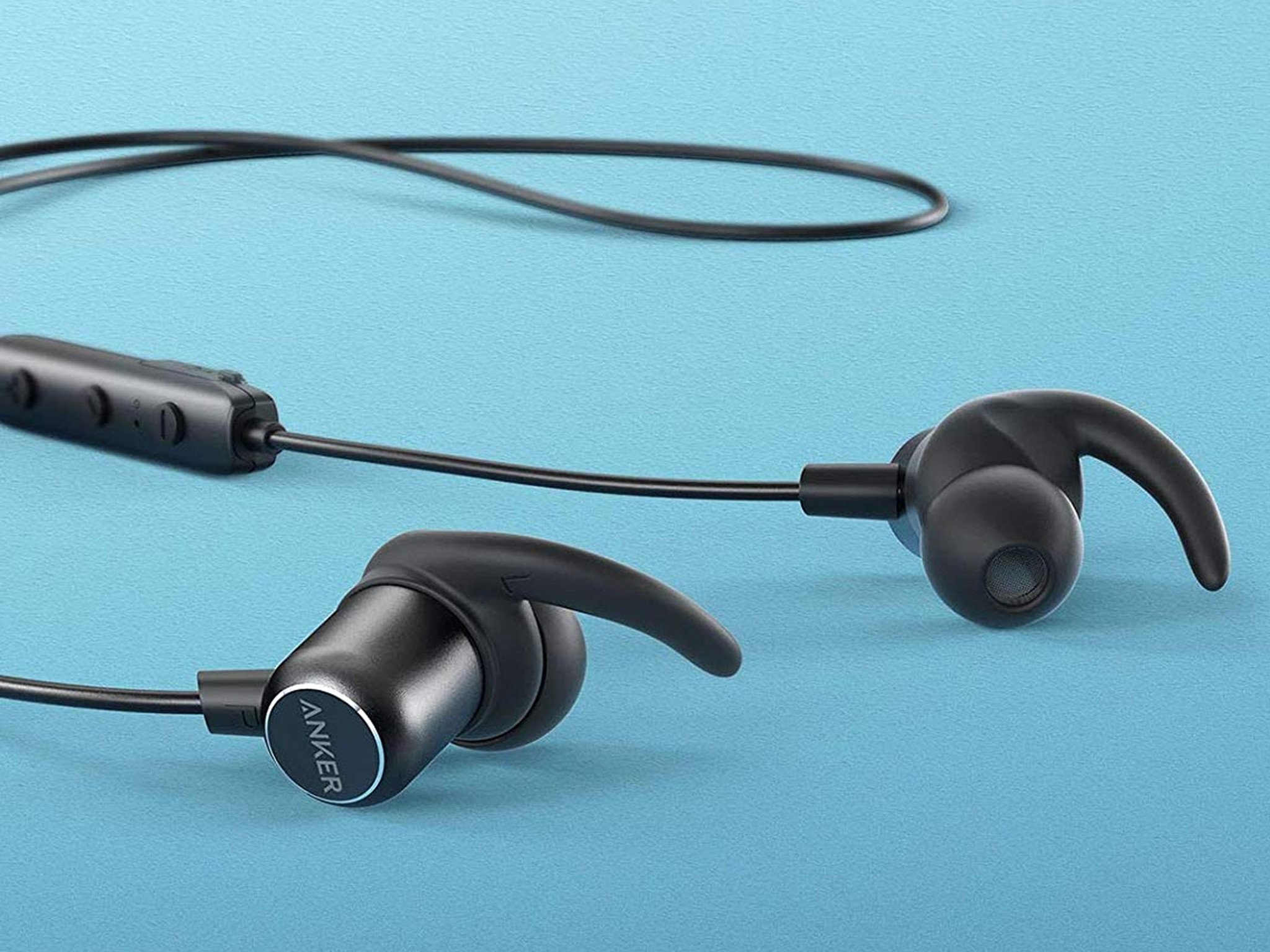
The Anker SoundBuds Slim are a great set of earbuds for a stupidly low price. They feature IPX7 water resistance, which means you'll be covered in most scenarios. No, you can't just go swimming or shower with them on. But, if you drop them in a puddle by accident, or are doing some intense workout, the SoundBuds Slim should survive just fine.
Battery life wise, the SoundBuds Slim are good. They last up to 10 hours on a single charge and can be recharged using the included Micro-USB cable. Unfortunately, there's no fast charging here so to charge from 0% to full battery; you're looking at around three hours.
In terms of sound, they are decent. The low-bass, which mostly handles thump and rumble is non-existent, but it gets made up with the mid- and upper-bass boost. The mid-range has a modest boost giving leading vocals and instruments a bit of space to breathe. And the treble is a bit harsh and piercing, making these slightly tricky to listen to if you have sensitive ears.
Fortunately, that's made up in the comfort department. In our testing, we've noticed zero ear fatigue or pain when having them on for long periods. They come with various tip sizes and should cover most people's ears.
Pros:
- Bluetooth 5.0
- IPX7 water-resistant
- Battery life
Cons:
- Micro-USB for charging
- Sound quality
Best Budget Earbuds
Anker SoundBuds Slim
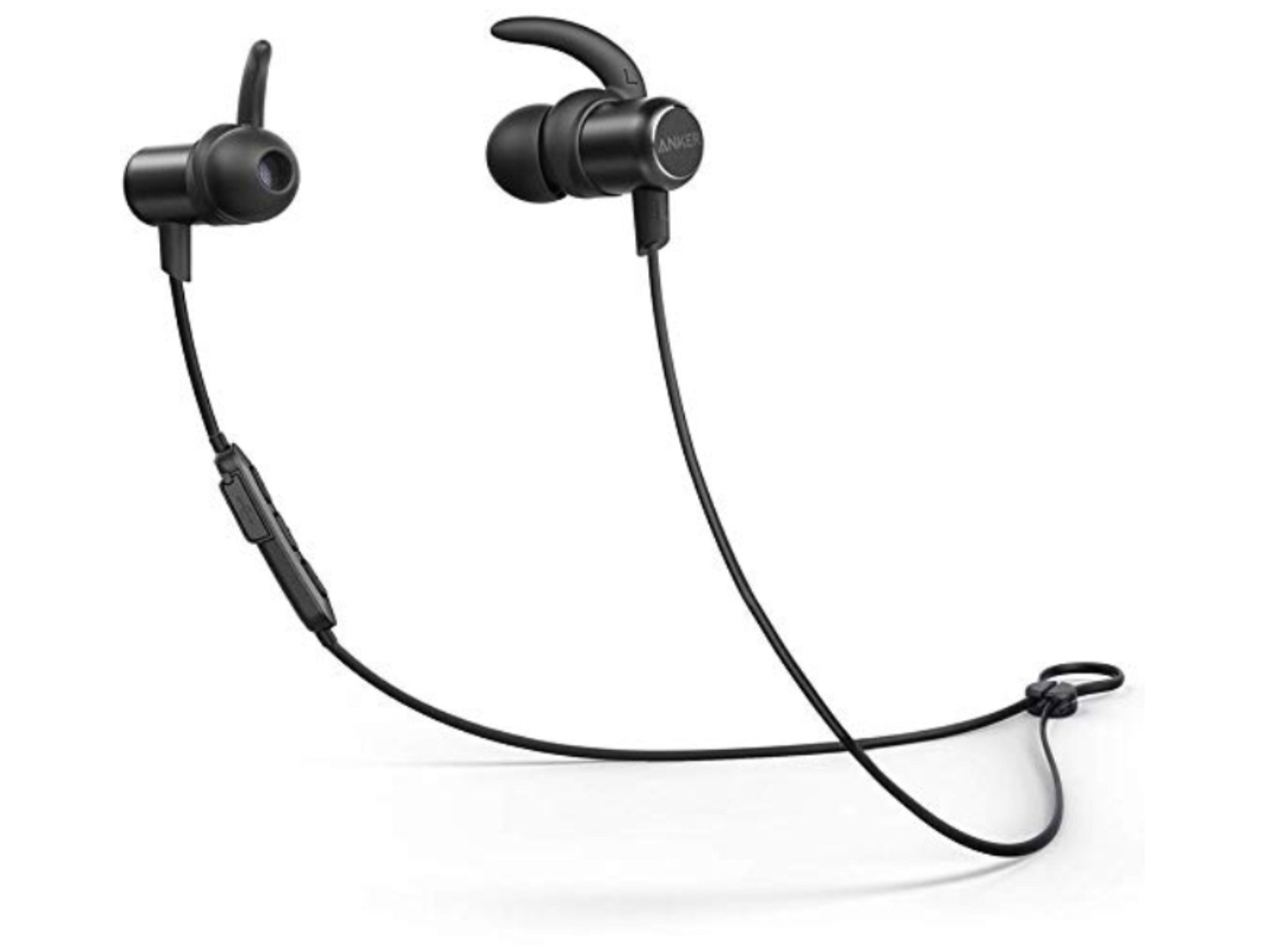
Cost-effective in-ear buds
The Anker SoundBuds Slim are great for those who workout. They're futureproofed and last about 10 hours on a charge.
Best Over-Ear: Sennheiser PXC 550 Wireless
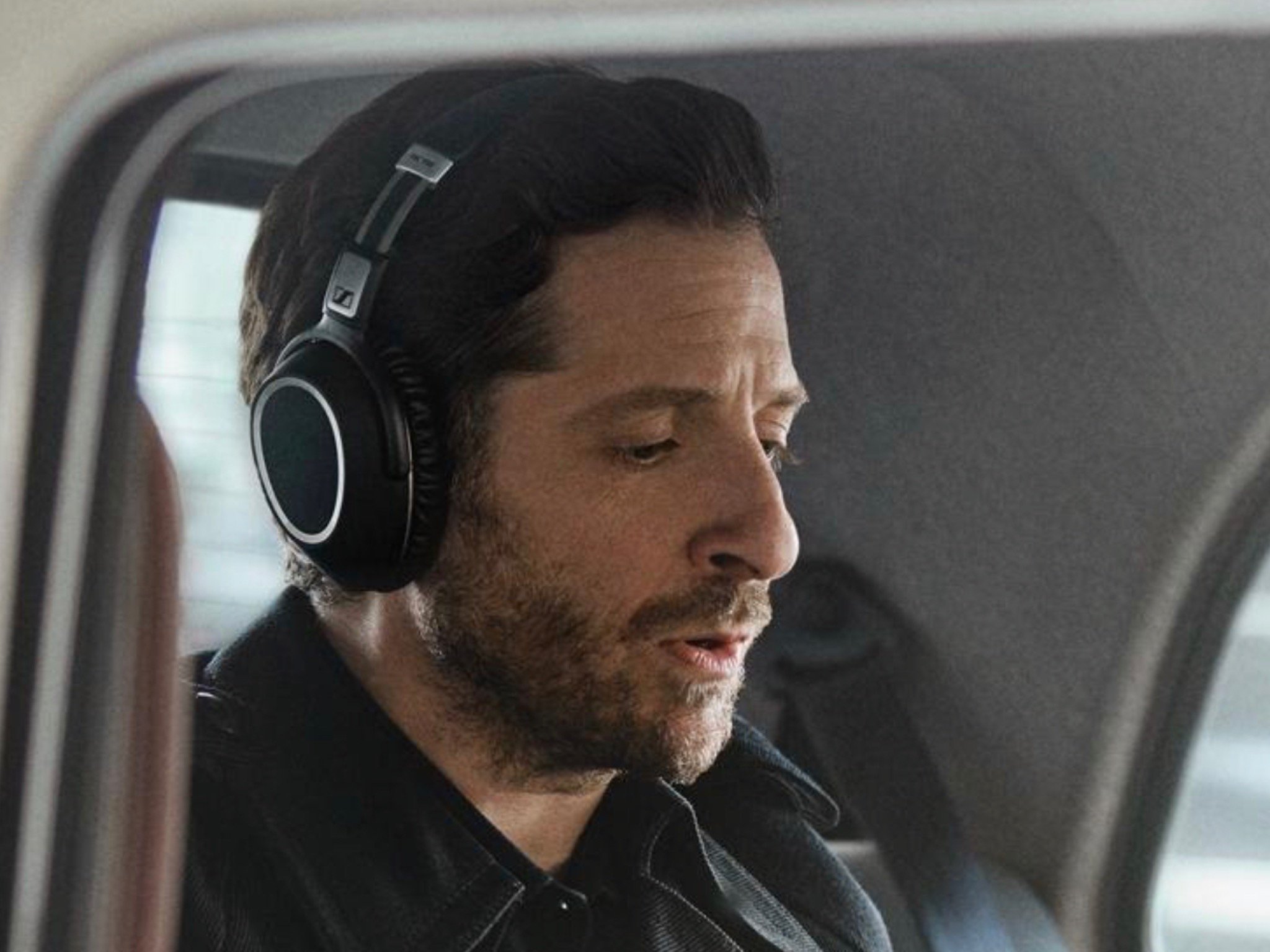
It's no surprise that our best over-ear headphone selection comes from Sennheiser. The PXC 550 Wireless offer outstanding sound quality for a wireless pair of cans. The bass is neutral and even, with no real overemphasis anywhere. Bass lovers might be disappointed as there isn't much thump or rumble. The mid-range is also neutral with an overall natural response, and the treble can come off a bit unnatural and weird. The low-treble is great and even, but the mid-treble is boosted which could create a sharper and piercing sound while the upper treble is recessed quite a bit, which could make lead vocals and instruments a bit less forward.
For Bluetooth audio codecs, the PXC 550 perform well. They support SBC and aptX, which means you'll get high-quality audio and low latency if your device supports aptX. Unfortunately, they're missing AAC, which is the standard on Apple devices, and aptX-HD or aptX-LL which would bring even lower latency and higher quality audio. However, this won't matter much if you're streaming music from Apple Music or Spotify, or listening to audiobooks or podcasts.
In terms of battery life, the PXC 550 are fantastic, with up to 30 hours of battery life on a single charge. Unfortunately, there's no fast charge option here. This means a full charge will take around 3 hours to complete. You'll also be getting Micro-USB here instead of the more modern USB-C for charging. However, this won't matter as much since the battery lasts quite a long time.
Pros:
- Battery life
- aptX Bluetooth audio codec support
- Sound quality
Cons:
Best Over-Ear
Sennheiser PXC 550
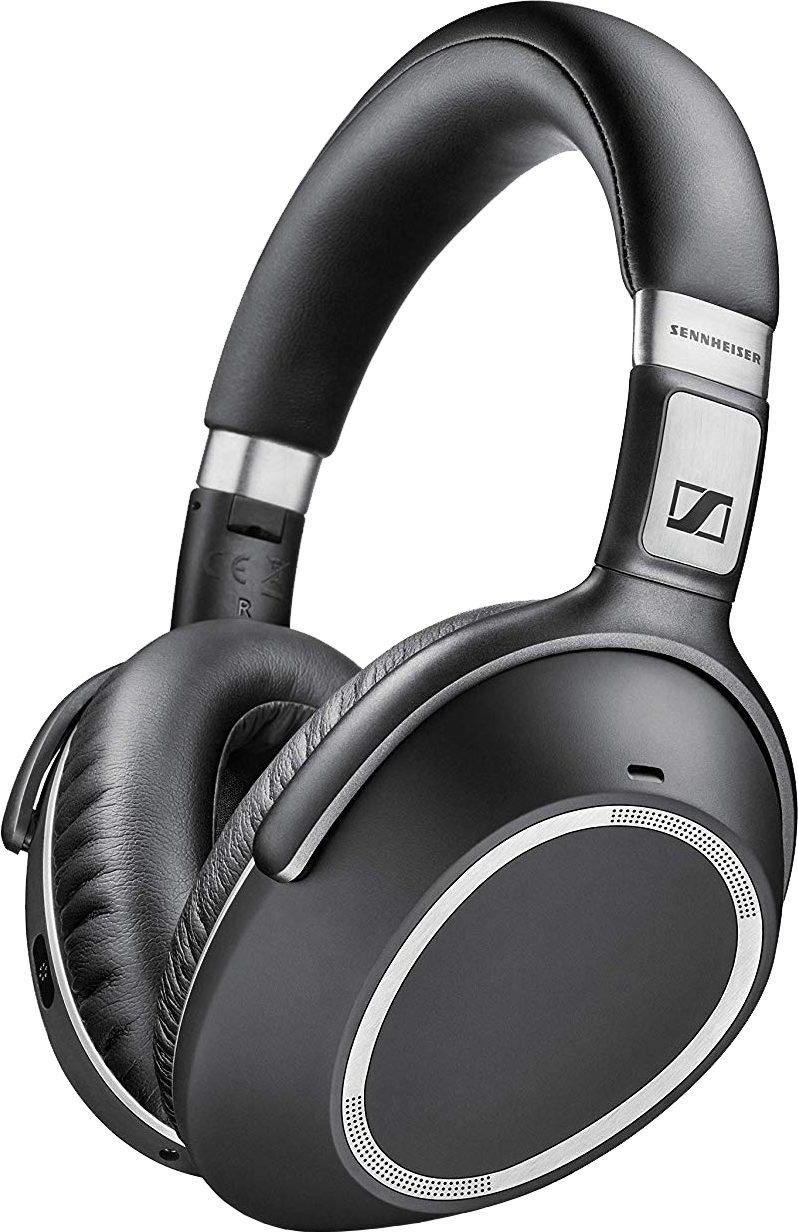
High-quality wireless sound
If you're looking for over-ear headphones with the absolute best sound, the PXC 550 doesn't disappoint.
Best On-Ear: Skullcandy Grind

The Skullcandy Grind are a great set of on-ear headphones that won't break the bank. Its design is rather minimalist with only a Skullcandy logo on the outside, above the ear cup.
Battery life is excellent as well with up to 12 hours of battery life; they should last you throughout the day without issue. Unfortunately, there's no fast charging which means charging the Grind from dead will take approximately 3 hours to come to a full charge. You'll also get Micro-USB instead of USB-C when it comes to charging.
Fortunately, the sound signature is perfect. The bass is relatively neutral and smooth with no issues there. The mid-range has a slight boost in the upper-mids, which will give the Grind a slightly brighter sound. And this extends well into the treble as well, as the entire region is boosted ever so slightly.
In terms of comfort, the Grind more than does its job. Since it's an on-ear solution, you don't have to worry about your ears getting warm. The headband extends well and doesn't get in your way either.
Pros:
- Battery life
- Sound quality
- Comfortable
Cons:
Best On-Ear
Skullcandy Grind
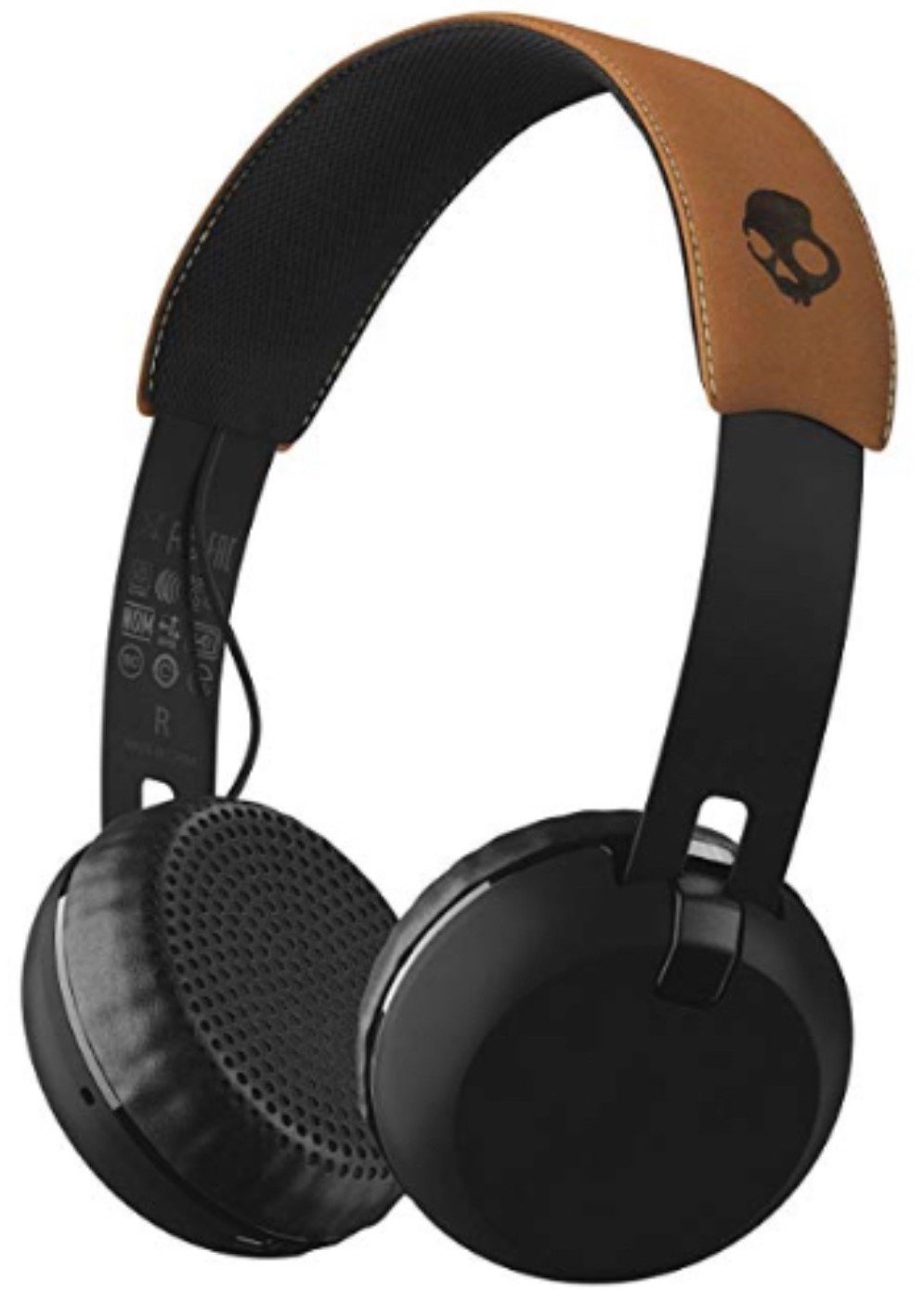
Comfortable on-ear headphones
If you were looking for a set of on-ear headphones that are super comfortable and have great sound, the Skullcandy Grind are worth looking at.
Best Neckbud: Bose QC30

For those looking for neck earbuds, look no further than the Bose QC30. They offer the three most important things that people have come to love with neck buds. They're comfortable around your neck and stay firmly in place so that you don't have to worry about them falling from your neck. When it comes to the earbuds themselves, they're comfortable there as well. The QC30 comes with a few different bud sizes in the box so you can choose which fits you best.
In terms of phone calls, the QC30 are excellent. In our testing, we didn't have any issues with being able to hear people on the other end, nor did they have any issues hearing us. For the most part, the person on the other end says they didn't even know we were using earbuds at all. The sound quality is also excellent. The entire bass and mid-range sound is rather neutral. The treble is a little uneven and is slightly sibilant. It's not overbearing and is controlled quite well.
When it comes to controlling your earbuds, the QC30 work tremendously. They have physical controls that mimic the classic iPod controls. Single tap them to play/pause, double-tap to skip forward, triple tap to skip back, and tap and hold for your phone's assistant.
The only real downside here is that there's no support for higher quality Bluetooth codecs such as AAC or aptX. You'll only get SBC, which is fine but you'll get a considerable amount of latency when watching videos or playing games.
Pros:
- Comfort
- Call quality
- Physical media controls
Cons:
- No AAC/aptX Bluetooth codecs
Best Neckbud
Bose QC30
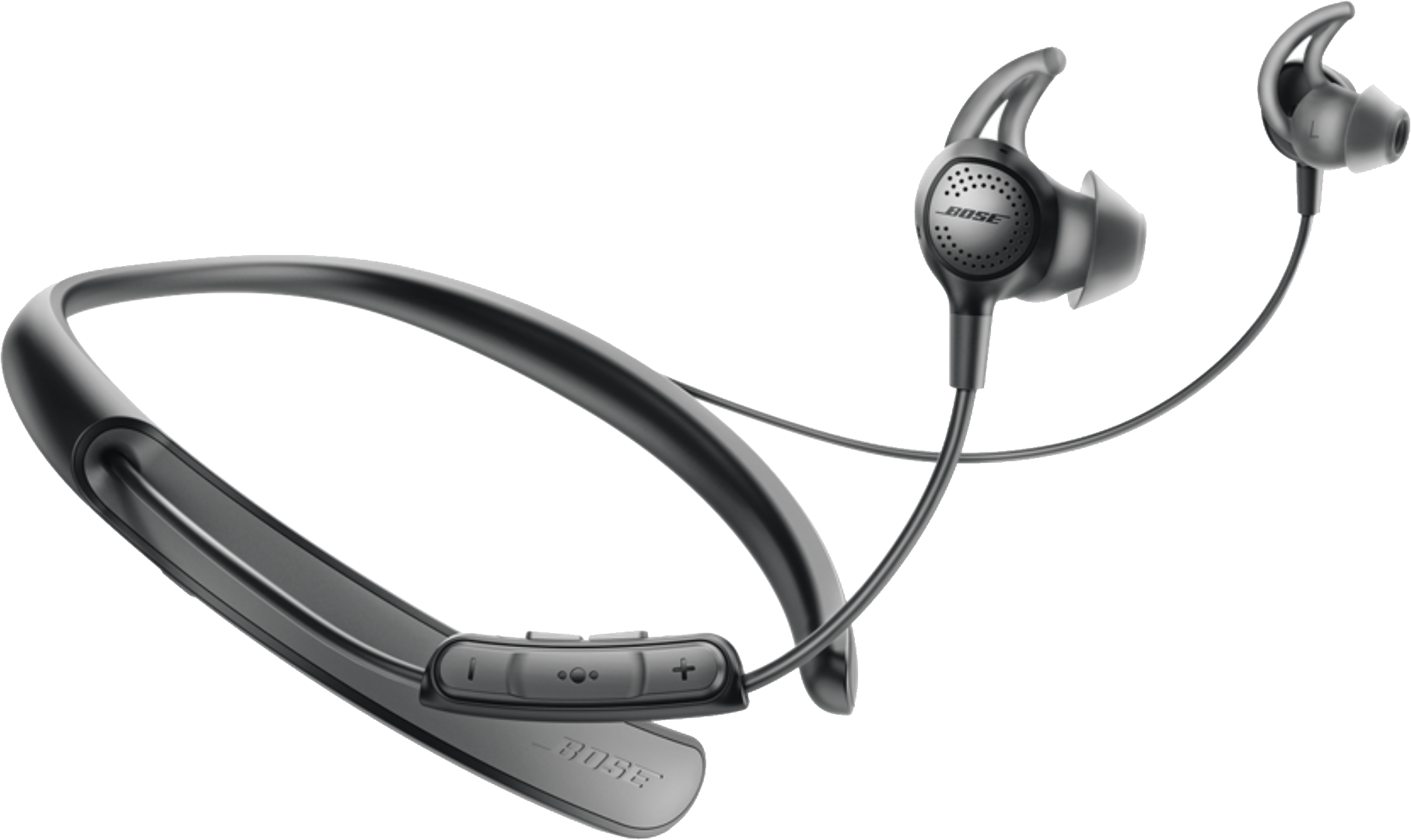
Comfy phone calls
They're on your neck all the time, ready to take phone calls. They're also decently great for music playback.
Best Truly Wireless: Jabra Elite 65t
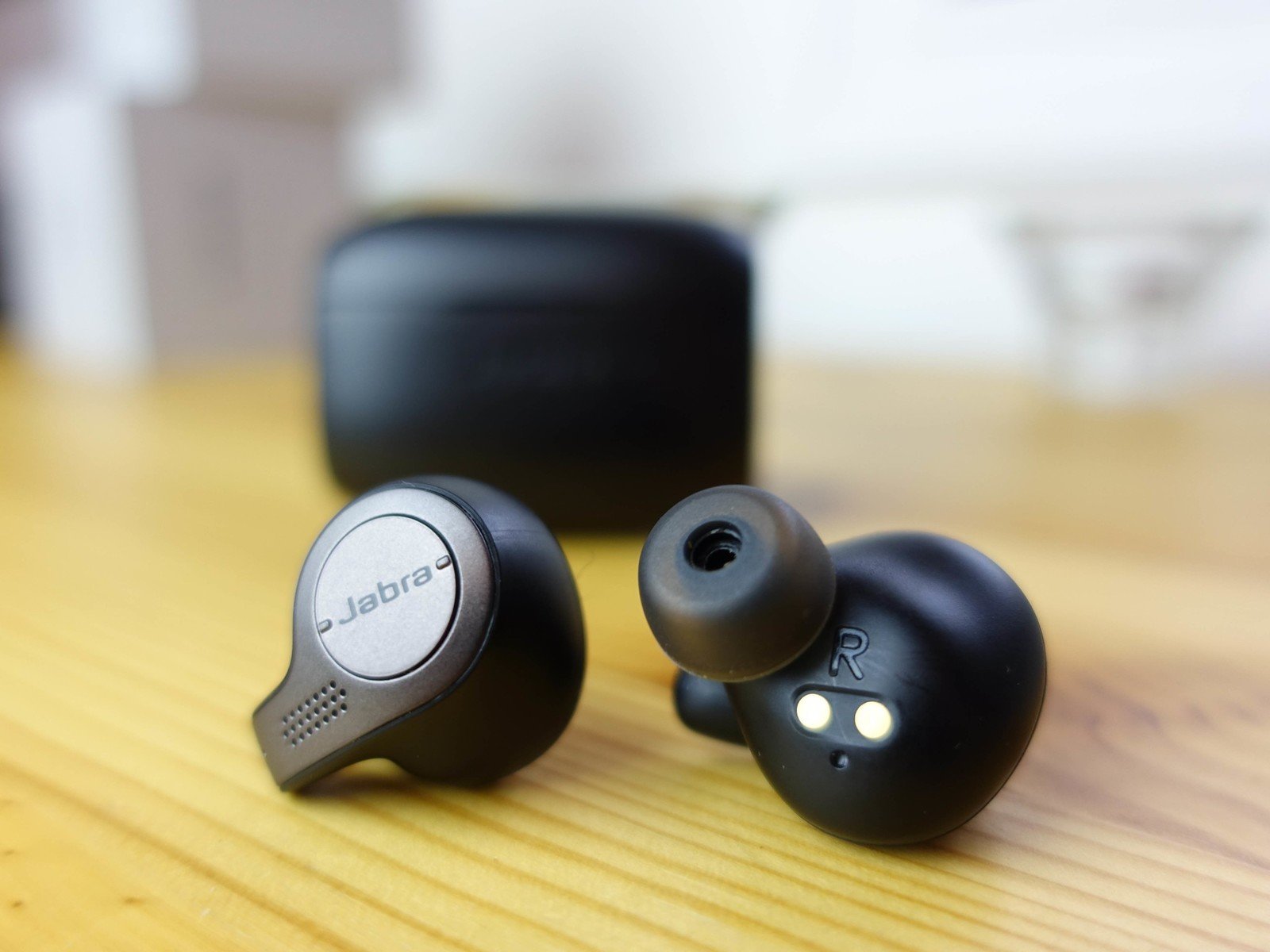
Let's start with the charging case. The charging case gives the Elite 65t an additional 10 hours of battery life on top of the excellent 5 hours on the buds themselves. This means you'll get a total of 15 hours of listening before needing to recharge the case. It's relatively small and should fit in your pocket no problem. The only downside to the case is that it uses Micro-USB instead of USB-C for charging, and there's no wireless charging capability. The buds last up to five hours before needing to be put back in the case. But when you do put them back in the case, they'll charge ridiculously fast. You'll have up to 1.5 hours of listening from a 15-minute charge.
They also have an IP56 water and dust resistance. This means that in most scenarios, you can splash them in water and most dusty and ingress should be covered as well.
The Jabra Elite 65t have a high-quality sound for a pair of truly wireless earbuds. The bass is missing a bit of low-bass, which is expected with truly wireless earbuds. This means that you'll lose a bit of thump and rumble in your tracks, but the 65t makes up for that by having a neutral mid-bass, and an elevated upper-bass which adds a bit of boominess to the sound. The elevation in the upper-bass extends into the lower-mids, which give them a more relaxed sound. For the treble, they are great and neutral for the most part up until the upper-treble, which means you'll get a bit of sibilance which can equate to a bit of harshness and sharpness in the treble.
For Bluetooth audio codecs, the Elite 65t are good. It supports the basic SBC codec but also supports AAC, which gets you better sound quality and lower latency. It's missing aptX, aptX-HD, and aptX-LL which gets you even better sound quality and even lower latency.
Pros:
- IP56 water resistance
- Battery life
- Fast charging capability
- AAC Bluetooth audio codec support
Cons:
- Micro-USB for charging case
- No wireless charging case
Best Truly Wireless
Jabra Elite 65t
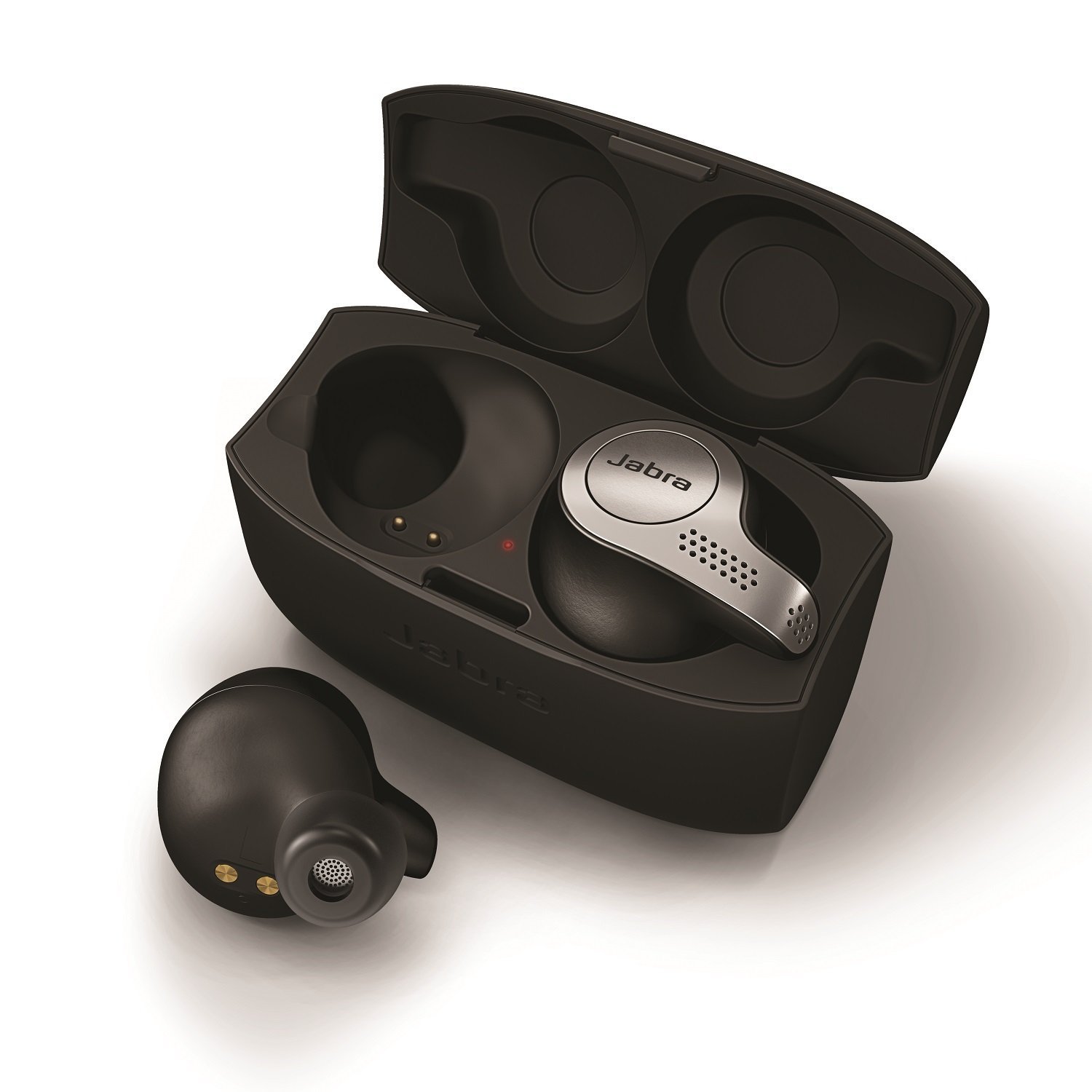
No wires, seriously
Truly wireless earbuds can be tricky. The Jabra Elite 65t currently is your best combination of battery life, comfort, sound, and portability.
Best Noise Canceling: Bose Noise Canceling Headphones 700
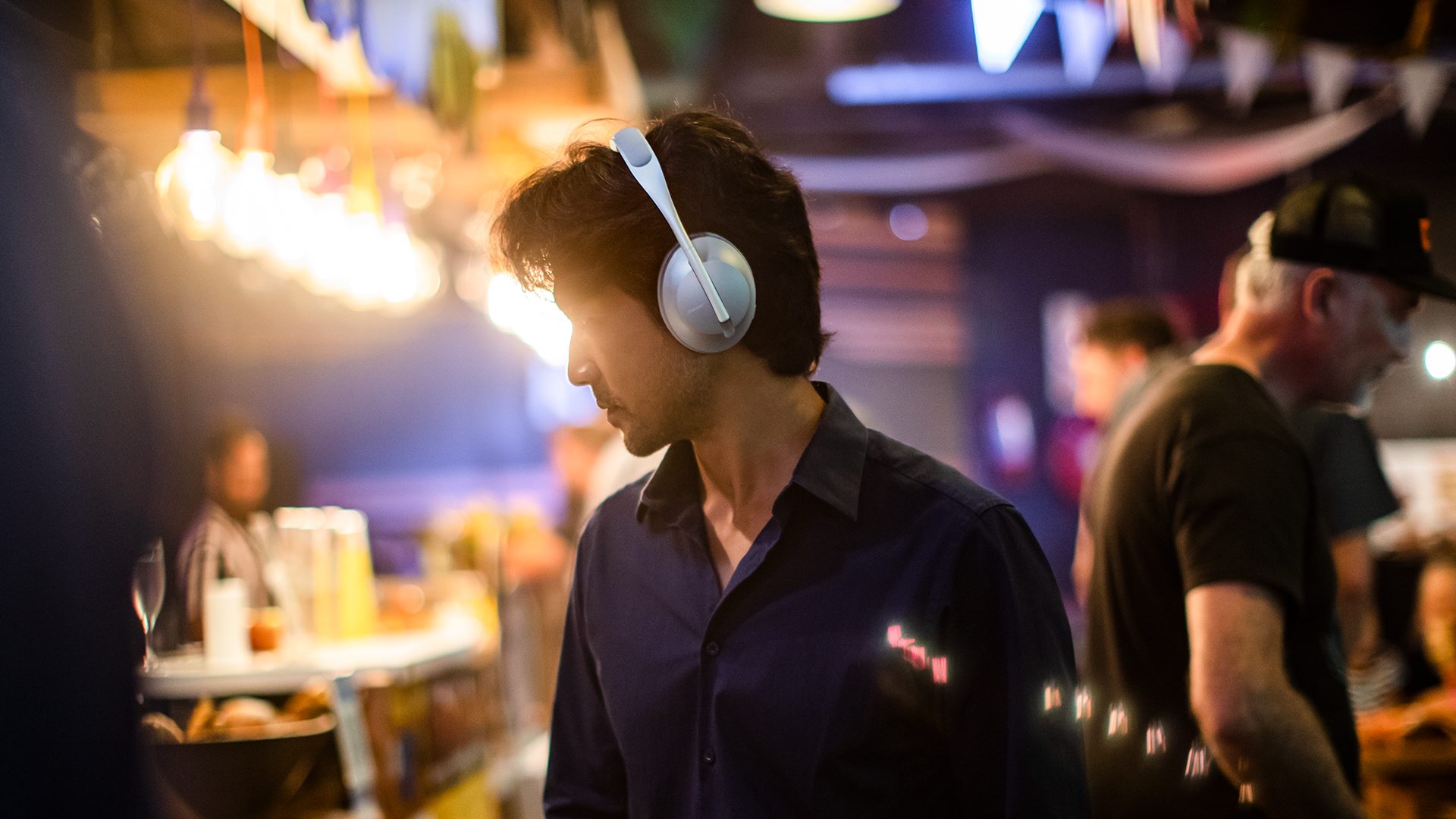
Being the successor to the Bose QC35 IIs, the Noise Canceling 700s do an outstanding job at canceling out noise. Not only do they do the standard blocking out low-end noise, the Noise Canceling 700s make improvements in the mid-range and treble. As with most ANC headphones, they still struggle with non-consistent noises such as talking. Where Bose takes it a step further with the Noise Canceling 700s is that these now offer up to 11 different steps of ANC that can be toggled within the app. This allows you to control the amount of ANC you want on a more intricate level.
In terms of sound quality, Bose has once again made significant improvements in this area. The overall sound is rather neutral, with the bass and mid-range being very natural and balanced. The treble, compared to the QC35 IIs, have been significantly reduced to lower the sibilance and fatigue you would hear with the QC35 IIs. Unfortunately, this means that the Noise Canceling 700s also lose quite a bit of brightness and airiness that the QC35 IIs had.
The Noise Canceling 700s and the QC35 Iis share a lot in common. For example, they both still have the great 20 hours of battery life, SBC and AAC Bluetooth audio codecs support, support for hands-free Alexa and Google Assistant, and are both super comfortable for long-term use.
The only real downside of the Noise Canceling 700s is that it doesn't have a folding design. This means that when you pack them away in your bag, the carrying case is quite large as it has to accommodate the entire un-folded design of the headphone. And they're expensive, so maybe wait until they get a discount.
Pros:
- Battery life
- AAC Bluetooth codec support
- 11 levels of ANC
- Support for hands-free Alexa and Google Assistant
- Comfortable
Cons:
- Non-foldable design
- Expensive
Best Noise Canceling
Bose Noise Canceling Headphones 700
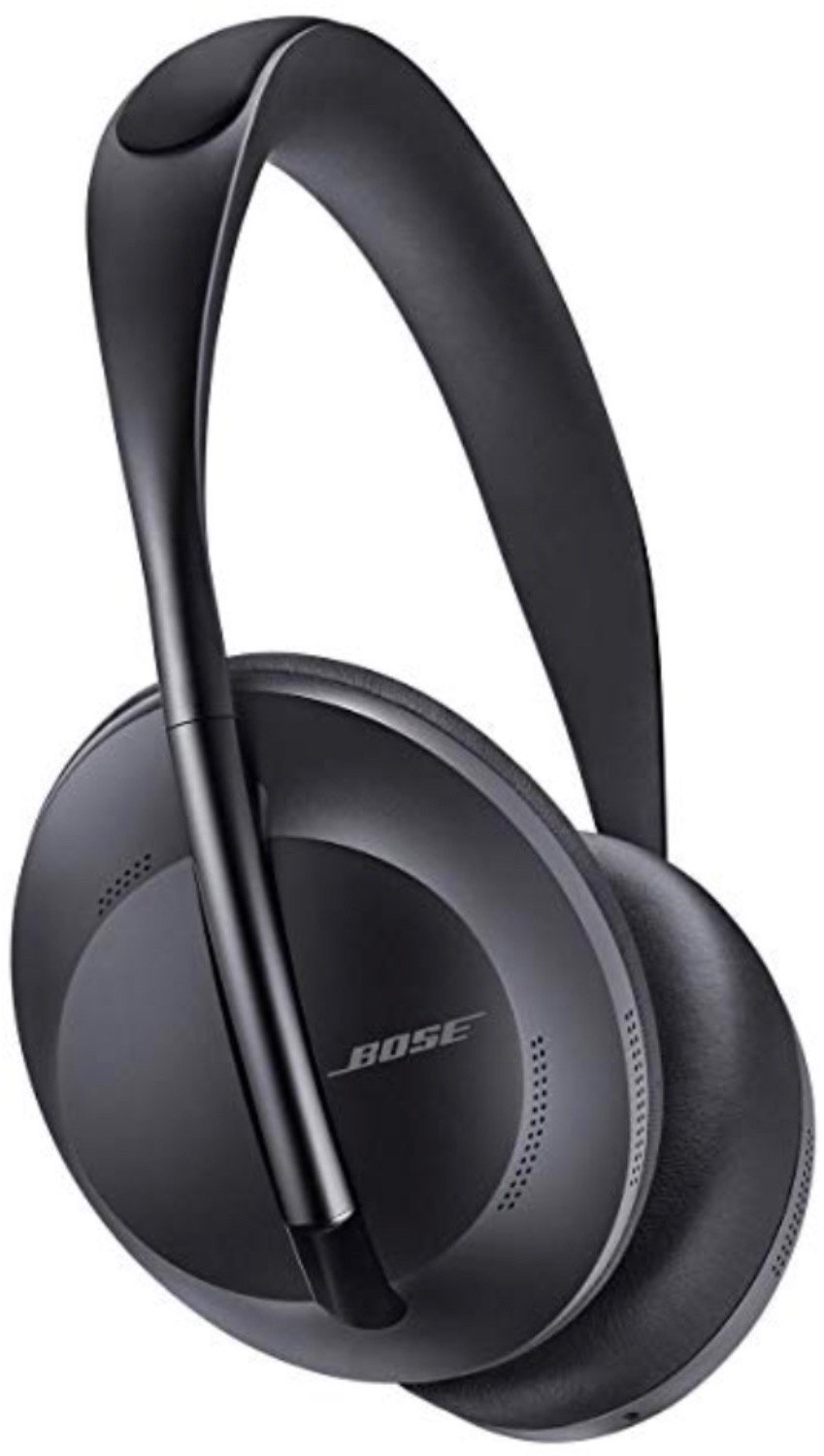
What? I can't hear you
You can't go wrong here. They sound great and have class-leading noise cancelation, but with this price, you can get better sound quality for less.
Best For Sport: Beats Powerbeats Pro

The Powerbeats Pro is a no brainer if you're looking for proper workout buds. By far, they have the best battery life of any genuinely wireless earbud with up to 9 hours of use on a single charge and up to an additional 24 hours with the included charging case. They feature IPX4 water resistance, which means it should withstand a good amount of water such as sweat and light rain.
But, the best part about the Powerbeats Pro is their design. With an in-ear and hook design, it'll be near impossible for these to fall out of your ears regardless of how intense your workout is. You'll also get physical media controls that are available on both (yes, both) buds. The layouts are identical with a dedicated volume rocker on the top of the bud and a multi-purpose physical button for easy access to play/pause and skipping tracks.
In terms of sound quality, the Powerbeats Pro do reasonably well. The bass gets deeper than most wireless headphones, which gives you a good amount of thump without being overwhelming, the mid-range is nice and neutral, and the treble has a modest boost, making them slightly treble-forward. This means you'll get some sibilance in vocals and hi-hats and snares may sound a bit louder than the rest of the mix.
The only real downside to the Powerbeats Pro is that the charging case is comically large. It's clear that the case is meant to be put in a gym bag, backpack, or a purse unless it's the only thing in your jeans pocket. The case also charges via Lightning, which is better than MicroUSB but USB-C would have been preferred. Also, no wireless charging here either. Though, the buds do charge wirelessly in the charging case.
Pros:
- Physical media controls
- Battery life
- Water-resistant
Cons:
- Bulky Charging Case
- Lightning for charging
- No Qi wireless charging for case
- Pricey
Best Sport
Powerbeats Pro

Fantastic workout buds
Powerbeats Pro have great sound, long battery life, and with the hook and bud design, will stay in your ear no matter what you're doing.
Bottom line
Bluetooth headphones will continue to evolve as more devices come out without a headphone jack. Smartphones were the first device to ditch the jack, and now tablets, and even some computers are removing them entirely.
Great wireless headphones should be comfortable, be out of your way, have excellent battery life, and sound great. That's why you should consider the Sony WH-1000XM3 when buying a pair of wireless headphones.
They're not cheap but the additional price gets you some of the best active noise cancelation in the business, along with incredible sound quality, USB-C charging, ultra-long comfort, and unmatched battery life — all in a package that can fold down really small for traveling.
Credits — The team that worked on this guide

Peter Cao loves his headphones. He constantly cycles through and tests many headphones throughout the year. In his downtime, he likes to listen and analyze to music with said headphones.
 The PUBG team is continuing its quest to counter Fortnite's media tie-ins. PUBG Mobile is adding a handful of characters and equipment from AMC's version of The Walking Dead on October 1st, giving you that little bit of extra menace in battle royale...
The PUBG team is continuing its quest to counter Fortnite's media tie-ins. PUBG Mobile is adding a handful of characters and equipment from AMC's version of The Walking Dead on October 1st, giving you that little bit of extra menace in battle royale...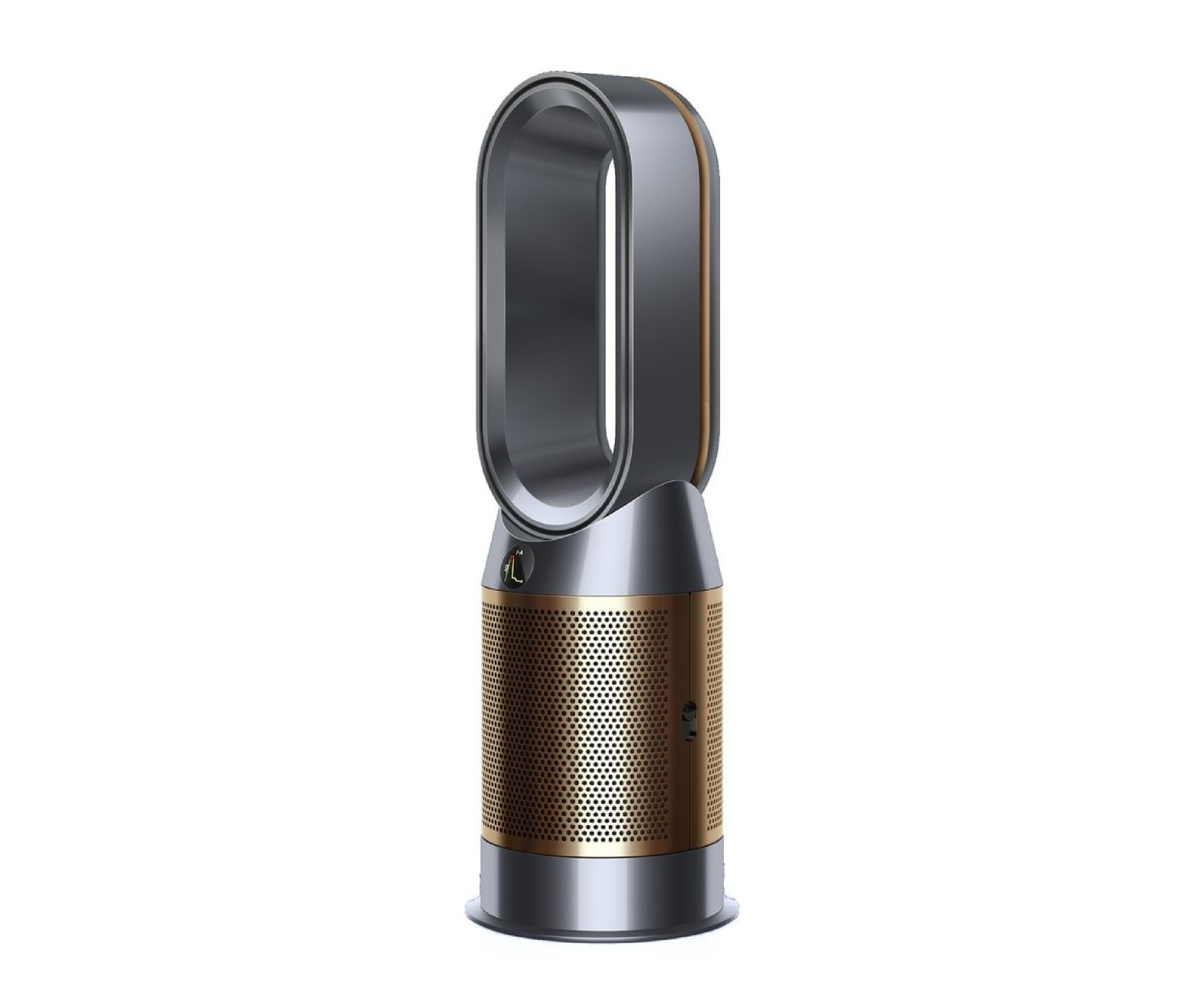 You may not know this, but formaldehyde could be one of the many pollutants in your home causing irritation to your eyes, nose and throat. Existing air purifiers remove the compound from the environment by using activated charcoal, but that process s...
You may not know this, but formaldehyde could be one of the many pollutants in your home causing irritation to your eyes, nose and throat. Existing air purifiers remove the compound from the environment by using activated charcoal, but that process s... Google's Pixel users in the US will soon have access to car crash detection features similar to Uber RideCheck's. XDA-Developers has spotted an unannounced app named "Personal Safety" on Google Play, which is described as "an app for Pixel phones tha...
Google's Pixel users in the US will soon have access to car crash detection features similar to Uber RideCheck's. XDA-Developers has spotted an unannounced app named "Personal Safety" on Google Play, which is described as "an app for Pixel phones tha...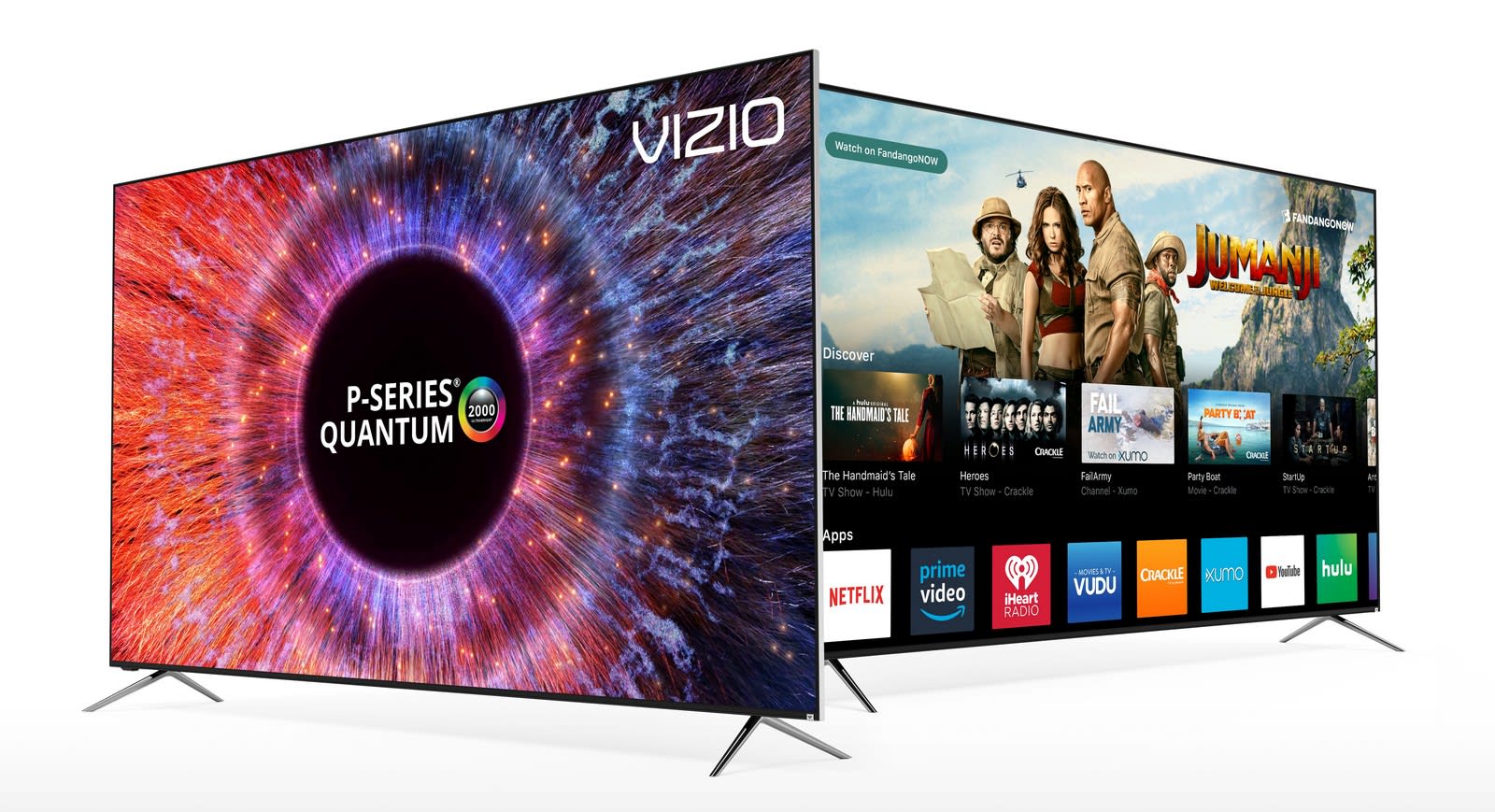 As usual, one of the biggest questions about buying a new TV is whether to buy a "new" model or grab one of last year's editions for a little bit less. It's been more than a year since Vizio debuted the P Series Quantum line that we loved at first si...
As usual, one of the biggest questions about buying a new TV is whether to buy a "new" model or grab one of last year's editions for a little bit less. It's been more than a year since Vizio debuted the P Series Quantum line that we loved at first si...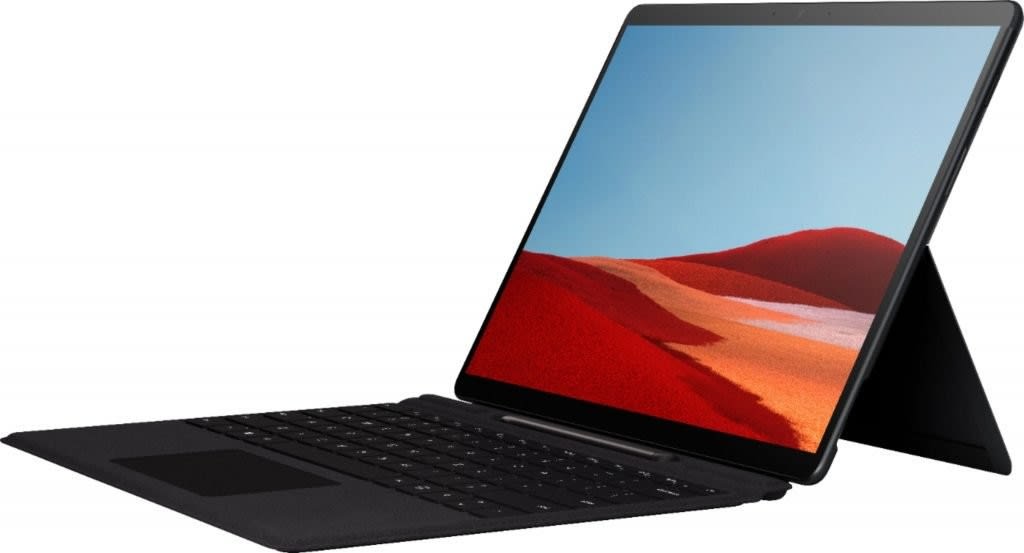 Wondering what's in store for the Microsoft Surface event on Wednesday? Evan Blass has posted renderings of several devices, including a Surface Pro 7 that brings a USB-C connector instead of Mini DisplayPort, and 10th-gen Intel Core CPUs inside. He...
Wondering what's in store for the Microsoft Surface event on Wednesday? Evan Blass has posted renderings of several devices, including a Surface Pro 7 that brings a USB-C connector instead of Mini DisplayPort, and 10th-gen Intel Core CPUs inside. He...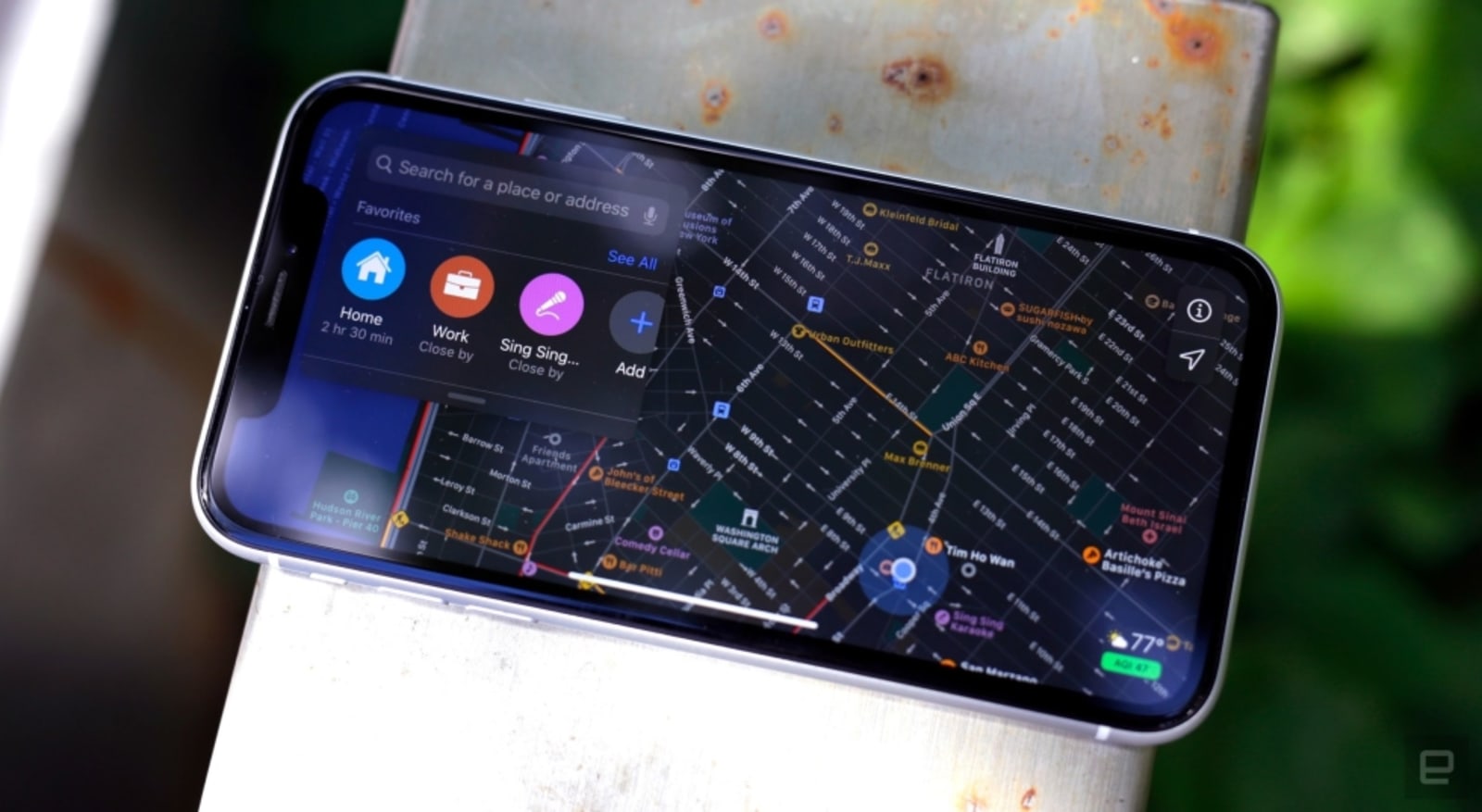 Apple is starting to roll out its major Maps update more broadly across the US. It overhauled the app for iOS 13 with revamped maps for parts of California and Texas, and now it's expanding its new and improved Maps across the northeast US.
Apple is starting to roll out its major Maps update more broadly across the US. It overhauled the app for iOS 13 with revamped maps for parts of California and Texas, and now it's expanding its new and improved Maps across the northeast US. One of the most iconic figures in PlayStation's management is stepping down. Sony has announced that Sony Interactive Entertainment's Worldwide Studios Chairman Shawn Layden is leaving the gaming division. The tech giant didn't initially say when L...
One of the most iconic figures in PlayStation's management is stepping down. Sony has announced that Sony Interactive Entertainment's Worldwide Studios Chairman Shawn Layden is leaving the gaming division. The tech giant didn't initially say when L...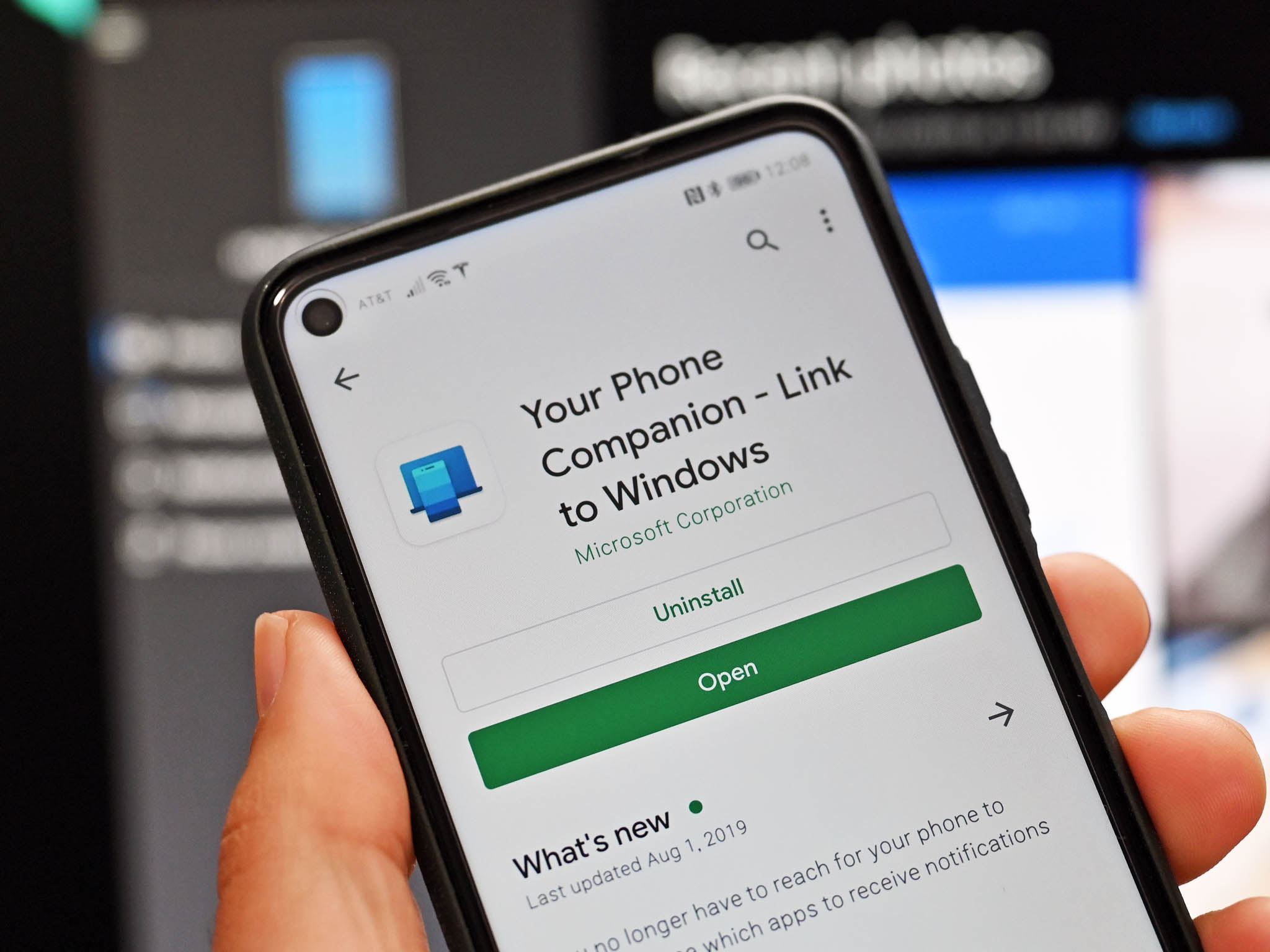

 Uber has faced significant criticism for its approach to rider safety, particularly regarding the issue of sexual assault complaints from riders against drivers. Recently, the company reportedly told its staff not to disclose assault reports to the p...
Uber has faced significant criticism for its approach to rider safety, particularly regarding the issue of sexual assault complaints from riders against drivers. Recently, the company reportedly told its staff not to disclose assault reports to the p... Versailles palace is one of the most popular tourist attractions in the world, but fighting those crowds in person can be frustrating. Now, Google and the Château de Versailles have teamed up to take VR users on a private tour of Louis XIV's ro...
Versailles palace is one of the most popular tourist attractions in the world, but fighting those crowds in person can be frustrating. Now, Google and the Château de Versailles have teamed up to take VR users on a private tour of Louis XIV's ro...
 It's been a long day. You get home as the sun is setting and close the door behind you, throwing down your keys and sliding off your shoes. You grab a drink and sink into the chair in front of your PC. The screen boots up and -- click, click -- it's...
It's been a long day. You get home as the sun is setting and close the door behind you, throwing down your keys and sliding off your shoes. You grab a drink and sink into the chair in front of your PC. The screen boots up and -- click, click -- it's... Venezuela may not just be using its own cryptocurrency to dodge the consequences of international sanctions. Bloomberg tipsters say the country's central bank is testing the possibility of holding on to cryptocurrencies in order to help the state-co...
Venezuela may not just be using its own cryptocurrency to dodge the consequences of international sanctions. Bloomberg tipsters say the country's central bank is testing the possibility of holding on to cryptocurrencies in order to help the state-co...
 Now that the regular MLB season is winding down, how has YouTube's exclusive game streaming deal fared? Quite well, relatively speaking. The online video giant reported that its 13 livestreamed games racked up an average of 1.2 million viewers (inc...
Now that the regular MLB season is winding down, how has YouTube's exclusive game streaming deal fared? Quite well, relatively speaking. The online video giant reported that its 13 livestreamed games racked up an average of 1.2 million viewers (inc... Hillary Clinton's private email server may once again be a hot-button issue three years after the FBI said it wouldn't press charges. Washington Post sources claimed State Department investigators have contacted "as many as" 130 officials to let the...
Hillary Clinton's private email server may once again be a hot-button issue three years after the FBI said it wouldn't press charges. Washington Post sources claimed State Department investigators have contacted "as many as" 130 officials to let the...
 The New York State Attorneys General office is suing Dunkin Donuts over the fact that thousands of the chain's customers have had their private information improperly accessed. Somehow that's not even the third craziest thing I'm about to tell you. L...
The New York State Attorneys General office is suing Dunkin Donuts over the fact that thousands of the chain's customers have had their private information improperly accessed. Somehow that's not even the third craziest thing I'm about to tell you. L...




















 It's not just botnets that can hijack PCs for nefarious ends. Microsoft and Cisco's Talos researchers have identified a new malware strain, Nodersok (or Divergent), that uses web apps to turn systems into proxies for malicious internet traffic. The...
It's not just botnets that can hijack PCs for nefarious ends. Microsoft and Cisco's Talos researchers have identified a new malware strain, Nodersok (or Divergent), that uses web apps to turn systems into proxies for malicious internet traffic. The...